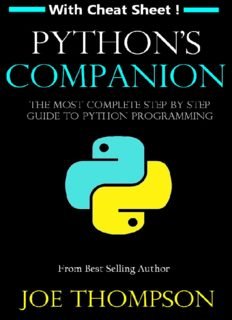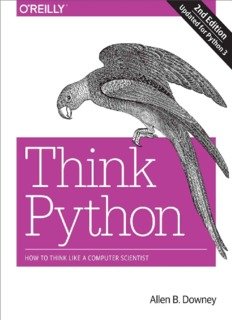Contents
Preface …………………………………………………………………………………… xi What’s on the CD-ROM? ……………………………………………………….. xiii List of Symbols ………………………………………………………………………. xv 1. Introduction: Probability and Statistics………………………………….. 1 1.1 Some Important Terms …………………………………………………………. 1 1.2 What does this book contain? ………………………………………………. 2 2. Basic Probability ………………………………………………………………….. 6 2.1 Fundamental Concepts ………………………………………………………… 6 2.2 Basic Rules of Combining Probabilities ………………………………….. 11 2.2.1 Addition Rule ………………………………………………………….. 11 2.2.2 Multiplication Rule …………………………………………………… 16 2.3 Permutations and Combinations ………………………………………….. 29 2.4 More Complex Problems: Bayes’ Rule …………………………………… 34 3. Descriptive Statistics: Summary Numbers …………………………….. 41 3.1 Central Location ……………………………………………………………….. 41 3.2 Variability or Spread of the Data …………………………………………… 44 3.3 Quartiles, Deciles, Percentiles, and Quantiles ………………………….. 51 3.4 Using a Computer to Calculate Summary Numbers …………………. 55 4. Grouped Frequencies and Graphical Descriptions ………………… 63 4.1 Stem-and-Leaf Displays ………………………………………………………. 63 4.2 Box Plots ………………………………………………………………………….. 65 4.3 Frequency Graphs of Discrete Data ………………………………………. 66 4.4 Continuous Data: Grouped Frequency ………………………………….. 66 4.5 Use of Computers ……………………………………………………………… 75 v
5. Probability Distributions of Discrete Variables ……………………… 84 5.1 Probability Functions and Distribution Functions …………………….. 85 (a) Probability Functions ……………………………………………………… 85 (b) Cumulative Distribution Functions …………………………………… 86 5.2 Expectation and Variance ……………………………………………………. 88 (a) Expectation of a Random Variable …………………………………… 88 (b) Variance of a Discrete Random Variable ……………………………. 89 (c) More Complex Problems ………………………………………………… 94 5.3 Binomial Distribution ……………………………………………………….. 101 (a) Illustration of the Binomial Distribution …………………………… 101 (b) Generalization of Results ……………………………………………… 102 (c) Application of the Binomial Distribution …………………………. 102 (d) Shape of the Binomial Distribution ………………………………… 104 (e) Expected Mean and Standard Deviation ………………………….. 105 (f) Use of Computers ………………………………………………………. 107 (g) Relation of Proportion to the Binomial Distribution …………… 108 (h) Nested Binomial Distributions ……………………………………….. 110 (i) Extension: Multinomial Distributions ………………………………. 111 5.4 Poisson Distribution …………………………………………………………. 117 (a) Calculation of Poisson Probabilities ………………………………… 118 (b) Mean and Variance for the Poisson Distribution ……………….. 123 (c) Approximation to the Binomial Distribution …………………….. 123 (d) Use of Computers ………………………………………………………. 125 5.5 Extension: Other Discrete Distributions ………………………………… 131 5.6 Relation Between Probability Distributions and Frequency Distributions ……………………………………………………… 133 (a) Comparisons of a Probability Distribution with Corresponding Simulated Frequency Distributions ……………. 133 (b) Fitting a Binomial Distribution ……………………………………….. 135 (c) Fitting a Poisson Distribution …………………………………………. 136 6. Probability Distributions of Continuous Variables ………………. 141 6.1 Probability from the Probability Density Function …………………… 141 6.2 Expected Value and Variance …………………………………………….. 149 6.3 Extension: Useful Continuous Distributions ………………………….. 155 6.4 Extension: Reliability …………………………………………………………. 156 vi
7. The Normal Distribution……………………………………………………. 157 7.1 Characteristics …………………………………………………………………. 157 7.2 Probability from the Probability Density Function …………………… 158 7.3 Using Tables for the Normal Distribution ……………………………… 161 7.4 Using the Computer ………………………………………………………… 173 7.5 Fitting the Normal Distribution to Frequency Data …………………. 175 7.6 Normal Approximation to a Binomial Distribution …………………. 178 7.7 Fitting the Normal Distribution to Cumulative Frequency Data ……………………………………………………………….. 184 7.8 Transformation of Variables to Give a Normal Distribution ………. 190 8. Sampling and Combination of Variables ……………………………. 197 8.1 Sampling ……………………………………………………………………….. 197 8.2 Linear Combination of Independent Variables ………………………. 198 8.3 Variance of Sample Means ………………………………………………… 199 8.4 Shape of Distribution of Sample Means: Central Limit Theorem ………………………………………………………. 205 9. Statistical Inferences for the Mean…………………………………….. 212 9.1 Inferences for the Mean when Variance Is Known …………………. 213 9.1.1 Test of Hypothesis ………………………………………………….. 213 9.1.2 Confidence Interval ………………………………………………… 221 9.2 Inferences for the Mean when Variance Is Estimated from a Sample ………………………………………………….. 228 9.2.1 Confidence Interval Using the t-distribution ……………….. 232 9.2.2 Test of Significance: Comparing a Sample Mean to a Population Mean …………………………………………….. 233 9.2.3 Comparison of Sample Means Using Unpaired Samples .. 234 9.2.4 Comparison of Paired Samples …………………………………. 238 10. Statistical Inferences for Variance and Proportion …………….. 248 10.1 Inferences for Variance ……………………………………………………… 248 10.1.1 Comparing a Sample Variance with a Population Variance ……………………………………………….. 248 10.1.2 Comparing Two Sample Variances ……………………………. 252 10.2 Inferences for Proportion ………………………………………………….. 261 10.2.1 Proportion and the Binomial Distribution …………………… 261 vii
10.2.2 Test of Hypothesis for Proportion ……………………………… 261 10.2.3 Confidence Interval for Proportion ……………………………. 266 10.2.4 Extension ……………………………………………………………… 269 11. Introduction to Design of Experiments…………………………….. 272 11.1 Experimentation vs. Use of Routine Operating Data ………………. 273 11.2 Scale of Experimentation …………………………………………………… 273 11.3 One-factor-at-a-time vs. Factorial Design ……………………………… 274 11.4 Replication ……………………………………………………………………… 279 11.5 Bias Due to Interfering Factors …………………………………………… 279 (a) Some Examples of Interfering Factors ……………………………… 279 (b) Preventing Bias by Randomization …………………………………. 280 (c) Obtaining Random Numbers Using Excel ………………………… 284 (d) Preventing Bias by Blocking ………………………………………….. 285 11.6 Fractional Factorial Designs ……………………………………………….. 288 12. Introduction to Analysis of Variance ………………………………… 294 12.1 One-way Analysis of Variance ……………………………………………. 295 12.2 Two-way Analysis of Variance ……………………………………………. 304 12.3 Analysis of Randomized Block Design …………………………………. 316 12.4 Concluding Remarks ………………………………………………………… 320 13. Chi-squared Test for Frequency Distributions …………………… 324 13.1 Calculation of the Chi-squared Function ……………………………… 324 13.2 Case of Equal Probabilities ………………………………………………… 326 13.3 Goodness of Fit ……………………………………………………………….. 327 13.4 Contingency Tables ………………………………………………………….. 331 14. Regression and Correlation …………………………………………….. 341 14.1 Simple Linear Regression …………………………………………………… 342 14.2 Assumptions and Graphical Checks ……………………………………. 348 14.3 Statistical Inferences …………………………………………………………. 352 14.4 Other Forms with Single Input or Regressor …………………………. 361 14.5 Correlation …………………………………………………………………….. 364 14.6 Extension: Introduction to Multiple Linear Regression ……………. 367 viii
15. Sources of Further Information ……………………………………….. 373 15.1 Useful Reference Books ……………………………………………………. 373 15.2 List of Selected References ………………………………………………… 374 Appendices ………………………………………………………………………….. 375 Appendix A: Tables ………………………………………………………………….. 376 Appendix B: Some Properties of Excel Useful Appendix C: Functions Useful Once the During the Learning Process ………………………………………………. 382 Fundamentals Are Understood…………………………………………… 386 Appendix D: Answers to Some of the Problems ……………………………. 387 Engineering Problem-Solver Index ……………………………………….. 391 Index …………………………………………………………………………………… 393 | 







Отзывы
Отзывов пока нет.